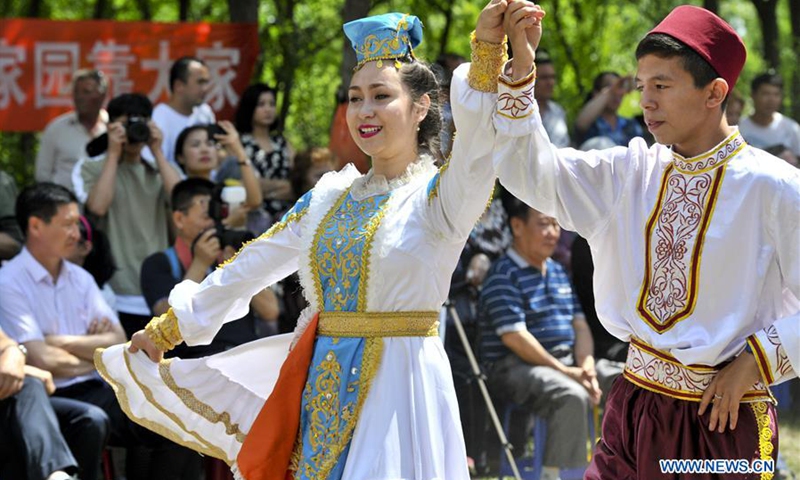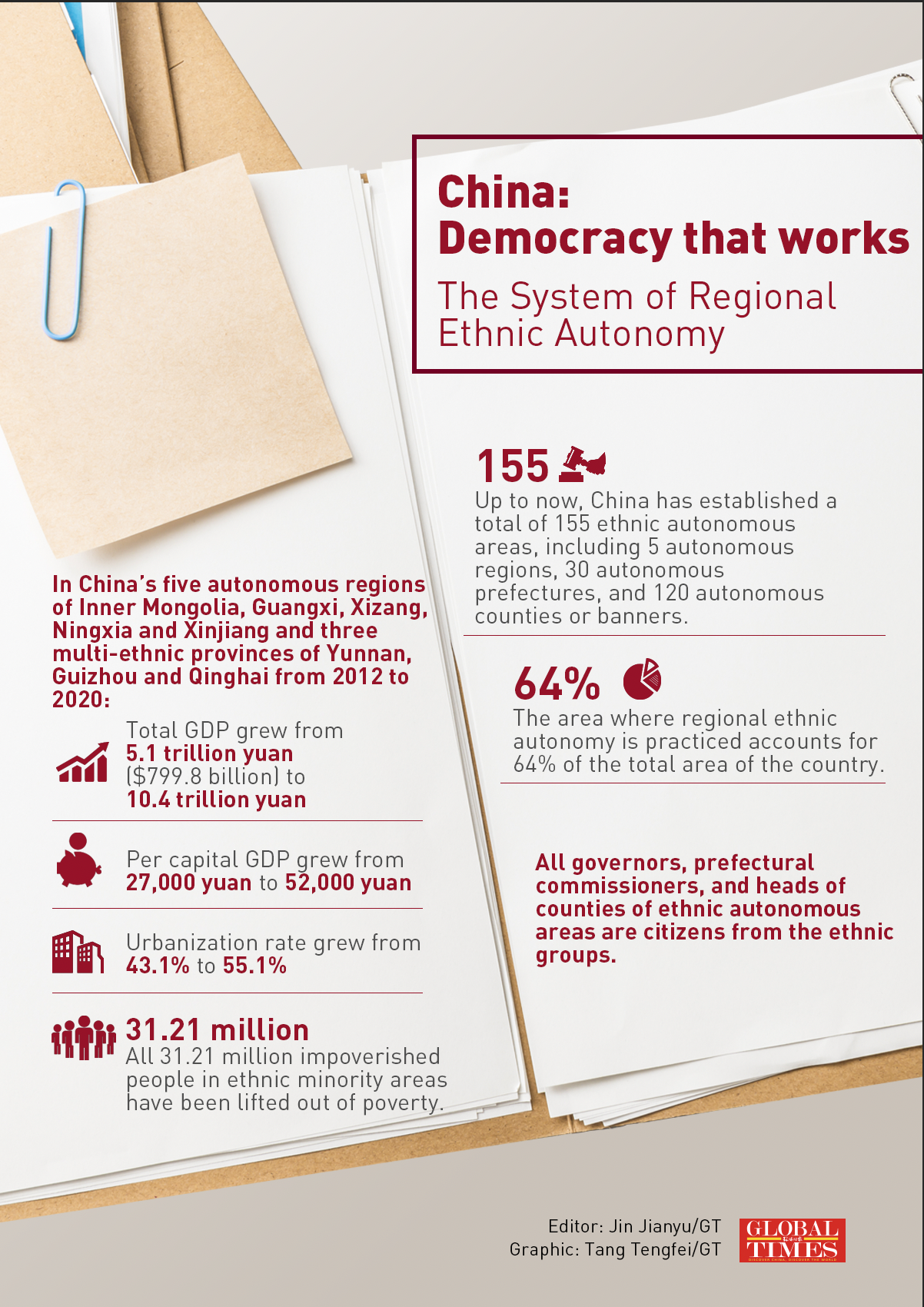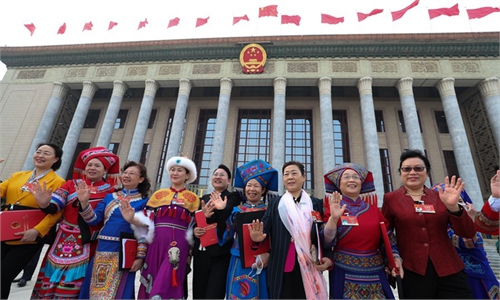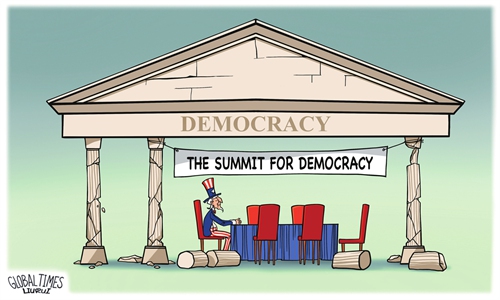Figures indicating good life of ethnic groups best answer to voices smearing China's regional ethnic autonomy system: official

People dance during the Saban festival of Tatar ethnic group in Tacheng, northwest China's Xinjiang Uygur Autonomous Region, July 22, 2017. Xinjiang is a multi-ethnic region.(Photo: Xinhua)
China's white paper on whole-process people's democracy released on Saturday introduced the country's system of regional ethnic autonomy. The system has greatly increased the sense of pride and responsibility of people of all ethnic groups and stimulated their enthusiasm, initiative and creativity in jointly steering the course to a bright future, said the white paper, titled "China: Democracy That Works."
Some Western countries have been continuously attacking China's policies on affairs related to ethnic minorities, particularly in Xinjiang Uygur Autonomous Region recently, but those groundless attacks cannot stop China's democratic practice of the regional ethnic autonomy. The development progress ethnic groups have made and figures that indicate the good life of the ethnic groups are best answers to the smears, Chinese official said.
Xu Yousheng, Vice Minister of the United Front Work Department of the CPC Central Committee, said at Saturday's press conference on the white paper that China has established 155 ethnic autonomous areas -- 5 autonomous regions, 30 prefectures and 120 counties or banners, which accounts for 64 percent of Chinese territories.
China's ethnic policies are built upon the goals of forging a keen sense of national identity, maintaining territorial integrity and national unification, and achieving common development and prosperity through the joint efforts of all ethnic groups, according to the white paper.
China's regional ethnic is autonomy under the unified leadership of the state. Territorial integrity and national unification are preconditions and foundations for regional ethnic autonomy. The autonomous bodies should ensure that central policies as well as national laws and regulations are implemented.
Based on that, autonomous areas have autonomy in legislation, economic development, fiscal management, training and appointment of ethnic officials, education and culture development, as well as use of ethnic language and characters.
Xu cited the training and appointment of ethnic officials as an example. On all standing committees of people's congresses of the 155 ethnic autonomous areas, there are citizens from the local ethnic groups assuming the office of chair or vice chair; all governors, prefectural commissioners, and heads of counties of ethnic autonomous areas are citizens from the ethnic groups.
It has been proved that the regional ethnic autonomy assists national unification, ethnic solidarity and social stability, the development of ethnic minority groups as well as the country's long-term peace and stability, he said.

China: Democracy that works - The System of Regional Ethnic Autonomy Editor: Jin Jianyu/GT Graphic: Tang Tengfei/GT
From 2012 to 2020, the five autonomous regions (Inner Mongolia, Guangxi, Xizang, Ningxia and Xinjiang) and three provinces with large ethnic populations (Yunnan, Guizhou and Sichuan) have seen their combined GDP doubled to 10.4 trillion yuan ($1.63 trillion), GDP per capita increased from 27,000 to 52,000 yuan. The urbanization rate increased from 43.1 to 55.1 percent. Some 31 million poverty-stricken people in ethnic areas were all lifted out of poverty and achieved moderate prosperity in all aspects together with other places, Xu said.
Chinese people are best qualified to say whether the regional ethnic autonomy is a good system and whether it works well. The progress ethnic areas have made, and the data indicating how all ethnic groups are living a good life are the best answers, the official said.
Meanwhile, the US and other Western countries have been smearing China's ethnic policies and heightened attacks on Xinjiang-related affairs, while turning a blind eye to their brutal history of genocide against native Americans.
Native Americans have been subjected to more than 1,500 wars, attacks, and raids authorized by the US government, the most of any country in the world against its indigenous people. The discovery of more than 1,000 unmarked graves at the sites of former indigenous residential schools in Canada is just the tip of the big iceberg of atrocities against the native population.


